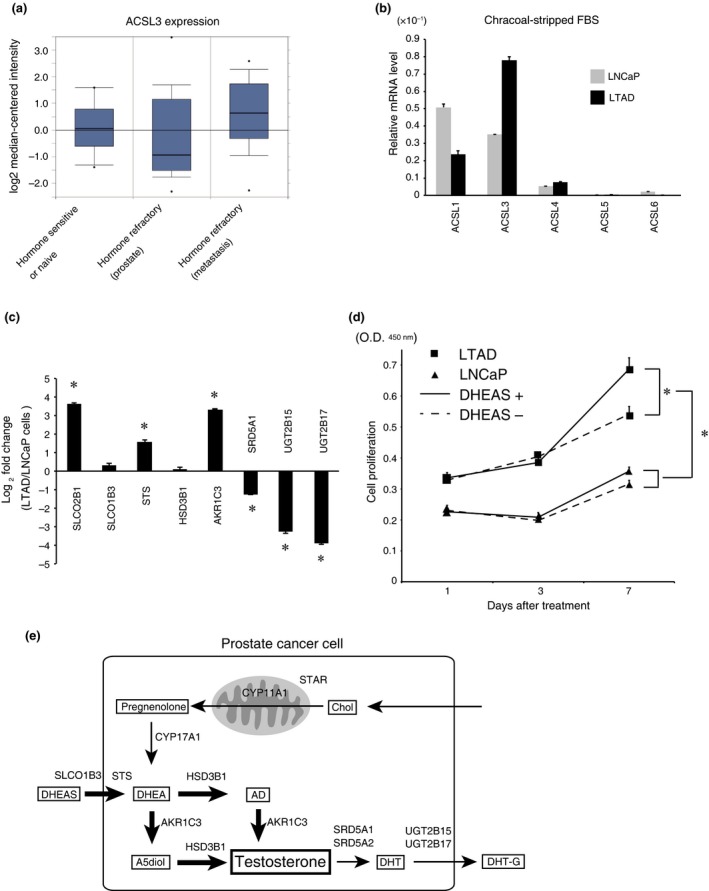Figure 4.

ACSL3 is overexpressed in the castration‐resistant prostate cancer (CRPC) model LTAD cells, and dehydroepiandrosterone sulfate (DHEAS) promotes the growth of LTAD cells. (a) ACSL3 expression data in hormone therapy response status were obtained from the dataset of Tamura prostate statics in Oncomine. The data includes 10 samples of hormone‐sensitive or hormone‐naïve prostate cancer, 13 samples of hormone‐refractory prostate cancer (from prostate) and 12 samples of hormone‐refractory prostate cancer (from metastasis). (b) LNCaP (grey bars) and LTAD (black bars) cells were cultured in the medium with charcoal‐stripped FBS for 48 h, and the relative mRNA levels of the ACSL isozymes were quantified by real‐time PCR. The data were normalized to β‐actin. (c) LNCaP and LTAD cells were cultured in the medium with charcoal‐stripped FBS for 48 h, and the relative mRNA levels were quantified by real‐time PCR for SLCO1B3,HSD3B1,AKR1C3 and UGT2B17. The fold changes of gene expression in LTAD cells relative to those in LNCaP cells were calculated. *P < 0.05. (d) LNCaP and LTAD cells were cultured as described in Figure 3d, and cell proliferation was assayed. *P < 0.05. (e) Schematic model of the potential mechanism of ACSL3‐mediated intratumoral steroidogenesis in prostate cancer. Bold arrows indicate an increased pathway. AD, androstenedione; A5diol, androstenediol; Chol, cholesterol; DHEA, dehydroepiandrosterone; DHEAS, dehydroepiandrosterone sulfate; DHT, dihydrotestosterone; DHT‐G, DHT‐glucuronide.
